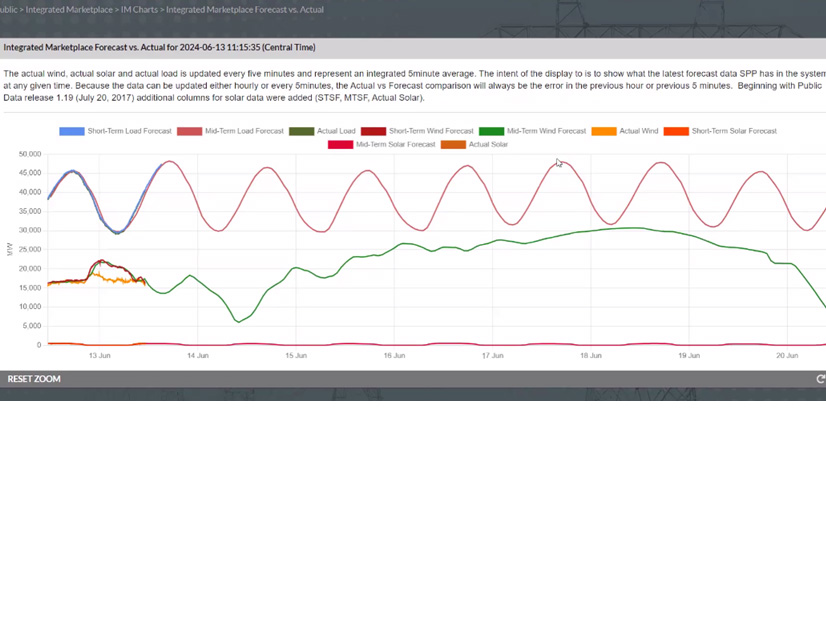SPP’s Resource and Energy Adequacy Leadership (REAL) Team approved a proposed tariff change June 13 that would codify its work and some votes over the past six months.
The revision request (RR622) would set separate base planning reserve margins (PRM) at 36% and 16% for the winter and summer seasons, respectively, effective with the 2026 summer. It would also clarify that the sufficiency valuation curve is effective for three years, beginning at the same time.
“I think it dawned on us, and probably a number of you in the room, that it wasn’t exactly clear,” Casey Cathey, SPP vice president of engineering, told the REAL Team.
The tariff change would also implement the 2023 loss-of-load expectation study that determined the appropriate PRMs for both seasons.
The Market Monitoring Unit (MMU) offered cautious support for the change, saying it supported the 36% and 16% PRMs and the sufficiency valuation curve’s extension. However, it also recommended that SPP continue to monitor generation’s performance during the next winter storm “and the one after that.”
“We see those as a minimum that should be approved,” the MMU’s John Luallen said, referring to the PRMs. “But with that said, I want to point out that in the last three winter storms, SPP found [itself] in a situation where they could not serve their load with accredited capacity. They had to rely on non-accredited capacity and on imports.”
The Monitor’s concern is what’s not in RR622, Luallen said. He said the sufficiency valuation curve lowers the deficiency payment, which, combined with a cost-of-new-entry value that the MMU believes is not quite accurate, could be sending the wrong market signals.
“If [the CONE]’s not updated for another four years, it will be even further from accurate,” Luallen said. “In our mind, it discounts an already discounted number, which is fine except that if the deficiency penalty gets low enough, then it could not have the signal that it needs for [load-responsible] entities to get the capacity. They could choose to just pay the penalty instead. So, we’re concerned about the signal this could be sending.”
The REAL Team approved the package 9-4. American Electric Power, Arkansas Electric Cooperative Corp., the Oklahoma Corporation Commission and the Oklahoma Municipal Power Authority provided the opposing votes, mirroring their votes on the related policies.
Looking ahead, the team’s workload includes ramping resource adequacy, an issue heightened by the increasing addition of intermittent renewable resources.
“What is ramping capacity?” SPP’s Charles Hendrix asked by way of explanation. “As load is increasing or decreasing, can your resources follow that load?”
“There’s a lot of data out there, but here’s what’s happening in real time,” Cathey said, using a graph of forecasted wind and solar resources to make his point. “We’re trying to figure out ways to incent and better value ramp.
“It should not be alarming to LREs in terms of what the system needs today. We have enough rampable capacity today. The question is, how long can we sustain it? Does it send a strong signal around dispatchable resources?” Cathey added. “That’s part of the reason we’re trying to add this requirement.”



